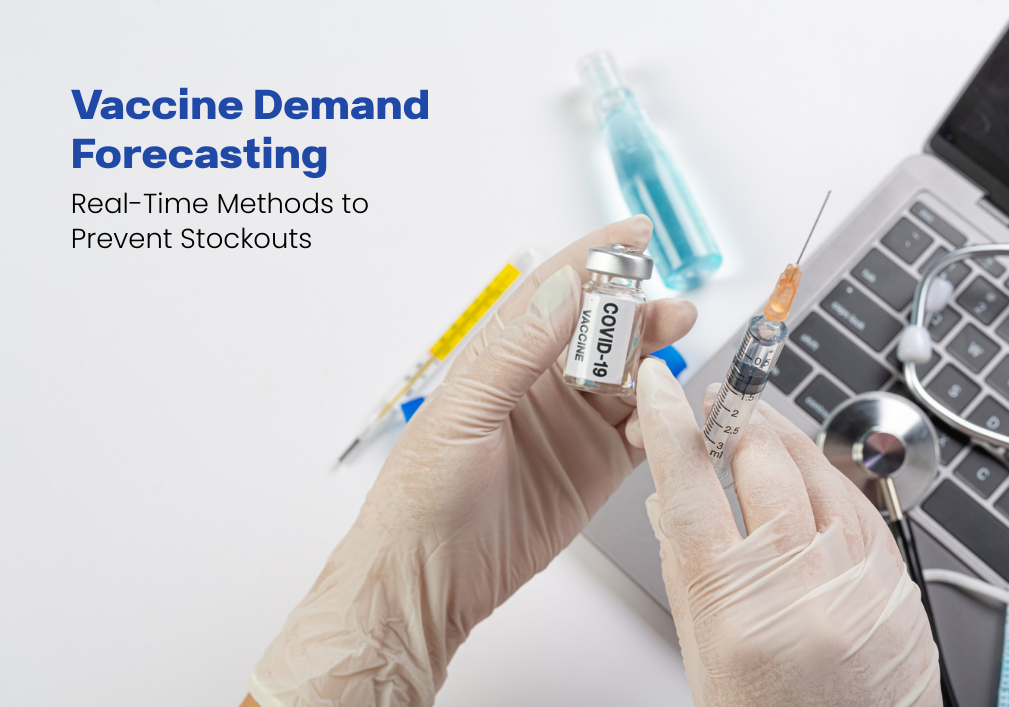Why Is It So Hard to Get Vaccines for Everyone?
Remember the early days of the pandemic? The long lines, the empty refrigerators, and the feeling of uncertainty about whether there would be enough vaccines. The biggest challenge wasn’t just making the vaccines; it was figuring out who needed them and when. If we had too little, people went without. If we had too much, it was wasted.
Today, in 2025, getting this right is more important than ever. The main goal is to stop shortages, cut down on waste, and make sure the right shots get to the right people at the right time.
What’s Vaccine Forecasting?
Vaccine forecasting involves predicting the number of shots required, their distribution, and the timing. But it’s trickier than guessing how many T-shirts a store will sell. Vaccines have special challenges:
- They need to be kept cold. If the temperature changes. This depends on cold chain logistics and resilient warehouse optimization practices aligned with broader global supply chain strategy. See related innovations highlighted at the International Supply Chain & Logistics Summit (ISCL).
- Demand changes fast. An outbreak can pop up overnight.
- The stakes are high. A mistake can cost lives.
Getting this right isn’t just a smart business move it’s a matter of public safety.
The Big Shift: From Old Guesses to Live Updates
For a long time, we estimated demand by reviewing numbers from the previous year. That worked fine until the world changed. The pandemic showed us that those old plans couldn’t keep up with how fast things moved.
Why the Old Way Failed
- The data was often weeks or months old.
- It couldn’t handle sudden outbreaks.
- It was often wrong, sometimes by a lot.
The New, Smarter Way
Now, we use real-time forecasting. This means we use live data to see what’s happening right now. We look at things like how many people are getting sick, They are getting vaccinated, and even how people are moving around. This helps us see problems before they happen.
Here’s how we’re doing it:
- Listening to Clinics: We use a method called “demand sensing” that was borrowed from the retail world. We look at daily information from pharmacies and hospitals to see how many shots are being used. This helps us spot changes in demand quickly and send more vaccines where they are needed. For example, a flu vaccine company might see sales increase in one city and send more doses there immediately.
- Tracking Diseases: We don’t just look at sales; we look at the illnesses themselves. We utilise sophisticated computer models to predict outbreaks of diseases such as measles or the flu. This helps health agencies prepare and send vaccines to the right places before a large wave of sickness hits.
- Smarter Stockrooms: Instead of just piling up vaccines in one city while another has nothing, we use intelligent systems to balance the stock. If there’s an outbreak somewhere, these systems can move vaccines to that location quickly.
What We’re Watching
To know if we’re doing a good job, we look at a few key things:
- Our Error Rate (MAPE): This number tells us how far off our guesses are. The lower this number, the better. The best systems can get this under 10%.
- Fill Rate: This is the percentage of vaccine requests that we can fill without a delay.
- Stockout Rate: This is how often we run out of vaccines when people need them.
The Challenges We Still Face
Even with all our new tools, a few things are still tough:
- Data is scattered. Information is often held in different systems that don’t talk to each other.
- Cold chains break. Even with a perfect plan, a simple logistics delay can ruin a batch of vaccines.
- Rules and red tape. Getting approval for new things can be slow.
What’s Next?
The future looks promising. We are moving toward a world where:
- Intelligent computers (AI) can predict new variants and tell us which vaccines we’ll need next.
- Blockchain can give us a clear, transparent record of every single vaccine dose.
- Countries work together and share information to help everyone through improved supply chain collaboration showcased at industry events like ISCL’s speakers and exhibitors.
Advice for Healthcare Leaders
- Use tools that show you what’s happening right now, not what happened months ago.
- Combine sales data with disease predictions to gain a comprehensive view.
- Always track your accuracy.
- Keep extra vaccines ready in places where it’s harder to keep things cold.
Conclusion: From Guesswork to Getting It Right
In 2025, guessing is out, and being precise is in. We are using new methods to stop the shortages that once cost lives. The simpler lesson is this: the wiser we get at forecasting, the safer we will all be.
FAQs
- What is vaccine demand forecasting?
It’s the process of predicting how many vaccine doses are required, where, and when, to avoid shortages and wastage. - How does demand sensing help in pharma?
Demand sensing in pharma uses real-time data (like pharmacy sales and hospital usage) to adjust vaccine forecasts quickly. - What role does epidemiological data play in forecasting?
It predicts disease outbreaks and aligns vaccine supply with expected demand surges. - Why is MAPE important in forecasting?
MAPE measures forecast accuracy. Lower MAPE means better predictions and fewer stockouts. - How can healthcare systems optimize vaccine inventory?
By using real-time forecasting, buffer stocks, and dynamic allocation to match demand patterns.




